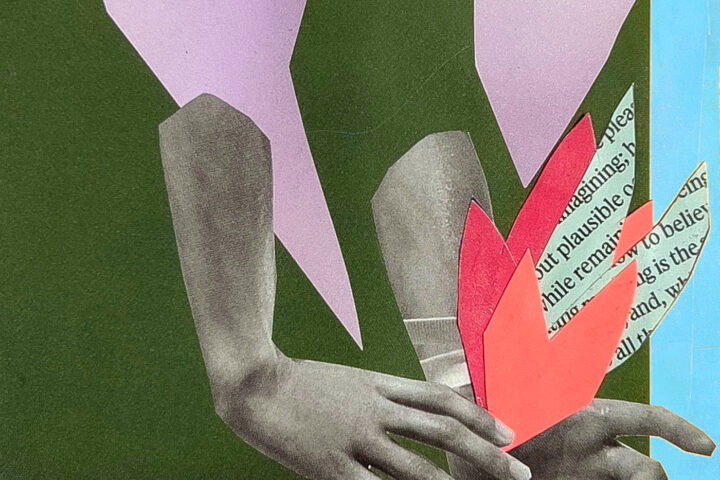Ten years ago, Kelefa Sanneh penned “Where’s Earl,” a New Yorker exposé in which he tracked down and interviewed the rambunctious Odd Future collective’s missing 16 year-old prodigy, Earl Sweatshirt. As of today, the rapper, born Thebe Kgositsile, has embraced a precocious maturity in his spiritual avant-rap — yet as much as this precocity has remained constant across his decade-long career, by the time Sanneh’s piece came out in 2011, it was far more evident in his raps than in his moral compass. Up to the point of his secret enrollment in a Samoan retreat for at-risk teenagers, his demo tapes leveraged wildly inappropriate content with masterclasses in brilliant writing.
The construct, a stark microcosm of the larger Odd Future collective from which it bloomed, managed to successfully hook an entire generation on its mixture of grown-up talent and youthful mischief. It was a formula for which chaos was both the ethos and the end-product, whether it manifested in anarchic pranks posted to the collective’s Tumblr account (and later, their own television show), or head honcho Tyler, the Creator, being banned from the United Kingdom for inciting a riot. A decade after their initial ascent, the members of the now-defunct group have all-but abandoned their once-potent selling points — they aren’t so young anymore, and they also aren’t actively on any no-fly lists (that we know of). But unlike the elements that first got them hooked, their valiant fan-bases haven’t gone anywhere. What keeps the followers hooked when youth and chaos are a non-factor?
The members of Odd Future have taught us a lot more than how to pull pranks in public, and most important of these lessons is, perhaps, one they opted to show rather than tell: we need to grow up. Odd Future has a different meaning in 2022 than it did in 2012, not because of any predetermined artistic direction the group settled on in a team meeting, but because as they were psychically aging, they were mentally aging, too. Their relevance as a cultural force was preserved by an ability to evolve. Our relevance as a consumer base can only be determined by the same thing.
In some of my earliest encounters with Odd Future, a 15 year-old me — probably just having watched a Loiter Squad compilation on YouTube, or listened to The Odd Future Tape Vol 1 on a jailbroken Spotify Premium APK — was begging my mom for permission to purchase clothing with “OF” printed in pink-frosted donuts on the backs. I, much like the many once pre-teens that, too, pleaded for their strict parents to tolerate the most anarchic internet movement in America, have done a lot of growing since then (some of which has made me realize why my mom did not, in fact, let me buy a sweatshirt). And for the fans that remain just as entertained by the crew’s exploits years later, this is exactly the thing that has kept their heroes marketable sans the youthful chaos: while Odd Future was growing up, so were we.
And as much as it seems natural, while social media continues to drive the way we interact with our favorite artists, it’s something we need to work much harder to achieve. What Sanneh’s New Yorker piece sought to address, for instance, is the frightening dynamic created when an audience fails to mature alongside an act. When Odd Future members shouted “Free Earl” onstage or in songs, it was just an obscure mantra, a way of conveying the youthful to-hell-with-authority energy of their crew writ large. But fans took the phrase as a militant rallying cry, one that Earl Sweatshirt himself felt was little more than an attack on his mother, who had enrolled him in the Samoan boarding school.
“The only thing I need as of right now is space,” he told Sanneh in an email. “I’ve still got work to do and don’t need the additional stress of fearing for my family’s physical wellbeing.”
The movement had even gotten to a point where, even though the “Free Earl” campaign was somewhat initiated by them, the lengths to which fans dragged it took a toll on the O.F. members still in the United States.
“(Fans) saying ‘Free Earl’ without even knowing him,” Tyler, the Creator, raps in one track on his debut album. “See, they’re missing the new album, I’m missing my only friend.”
This past year, just about every prominent member of Odd Future released a new full-length project. The talent remains, but, for the most part, the recklessness that made a home in it has given way to newfound maturation — Tyler has traded his homophobia-laden rhymes for pride in his own bisexuality; Syd (Tha Kyd, formerly) has traded her complicity in marginalizing queer identities for a celebration of her own; and Earl, of course, is putting his precocious wordplay towards sacred rhythmic poetry.
The art never changed; the artists just grew up. And if we want to be the best consumers — and society members — we can be, we should, too.



